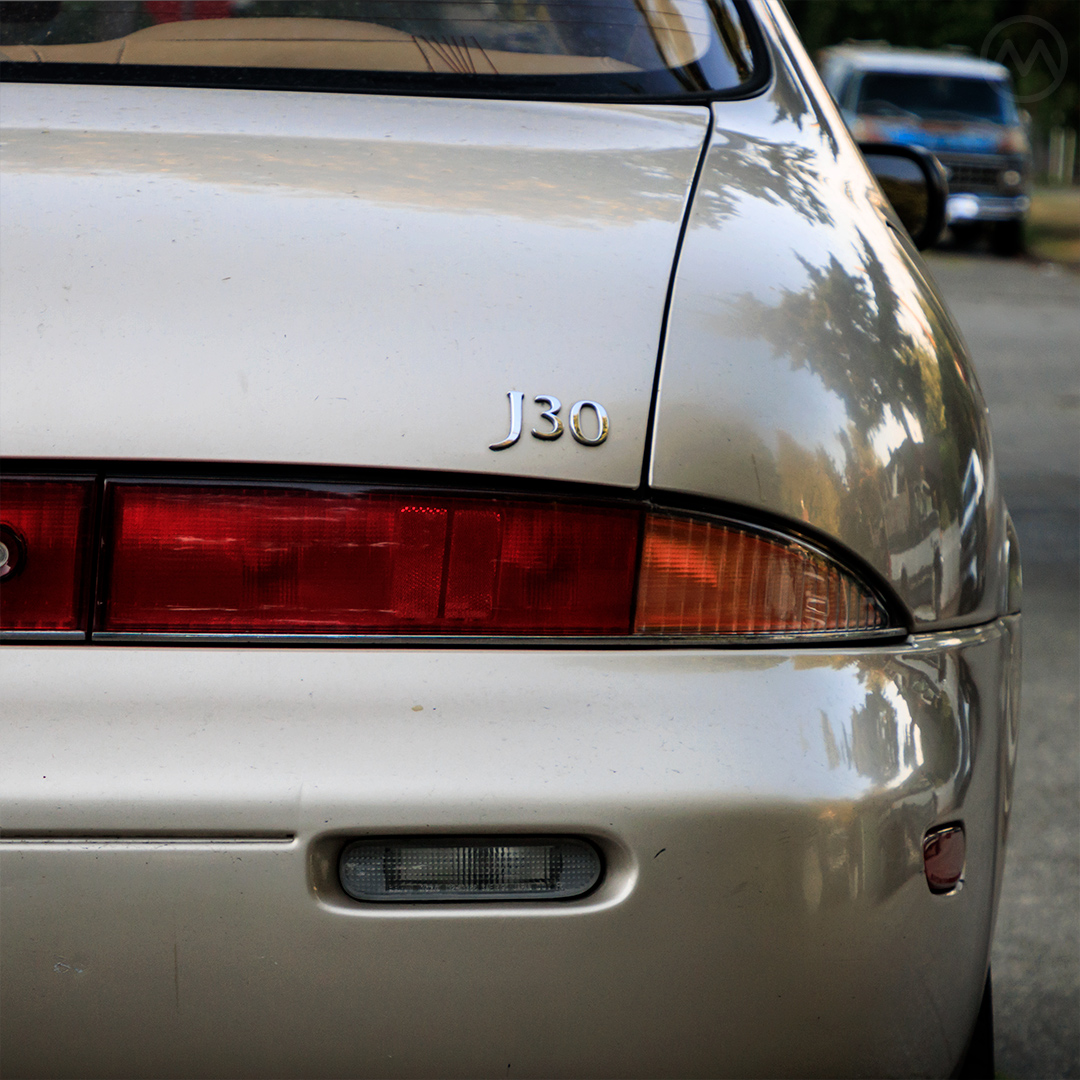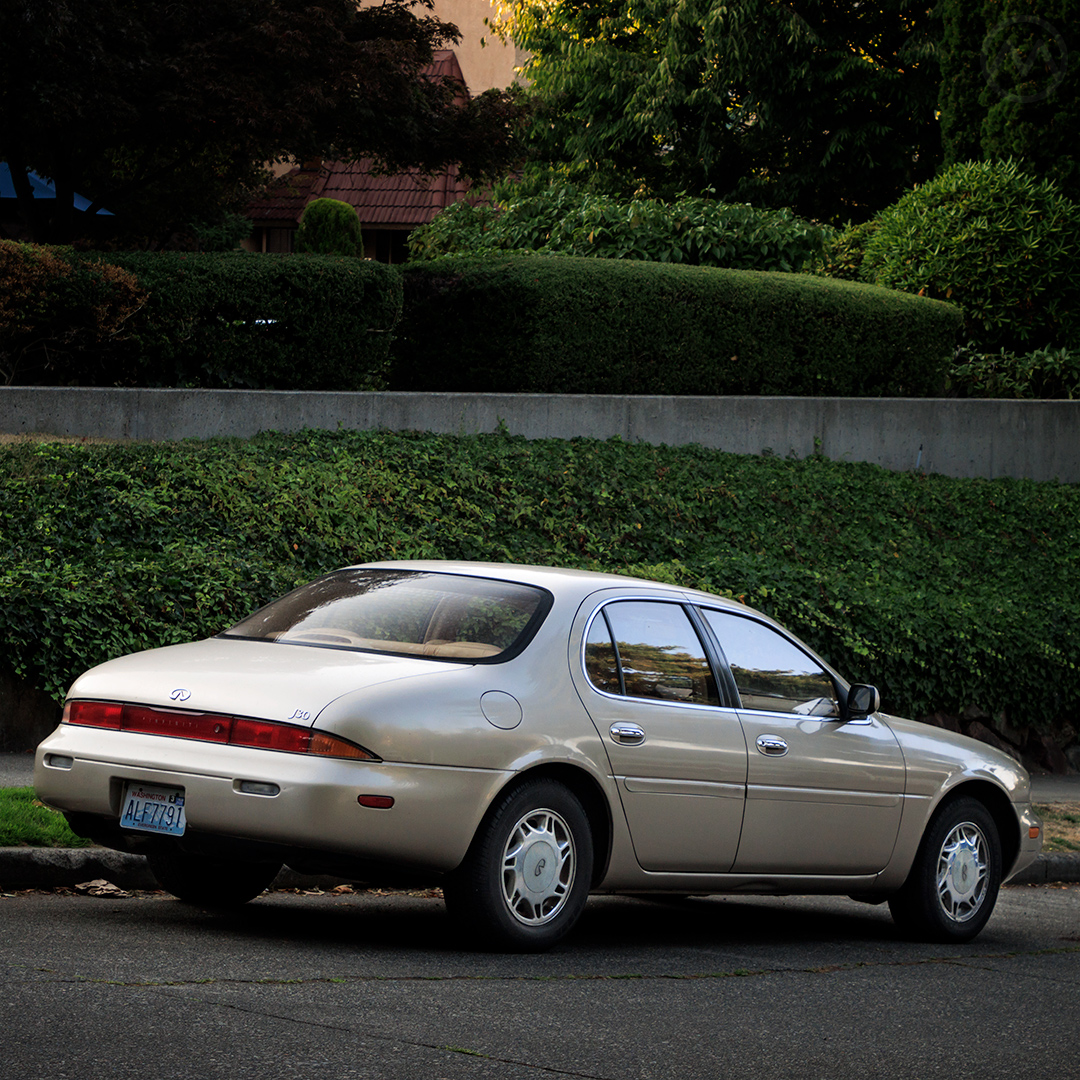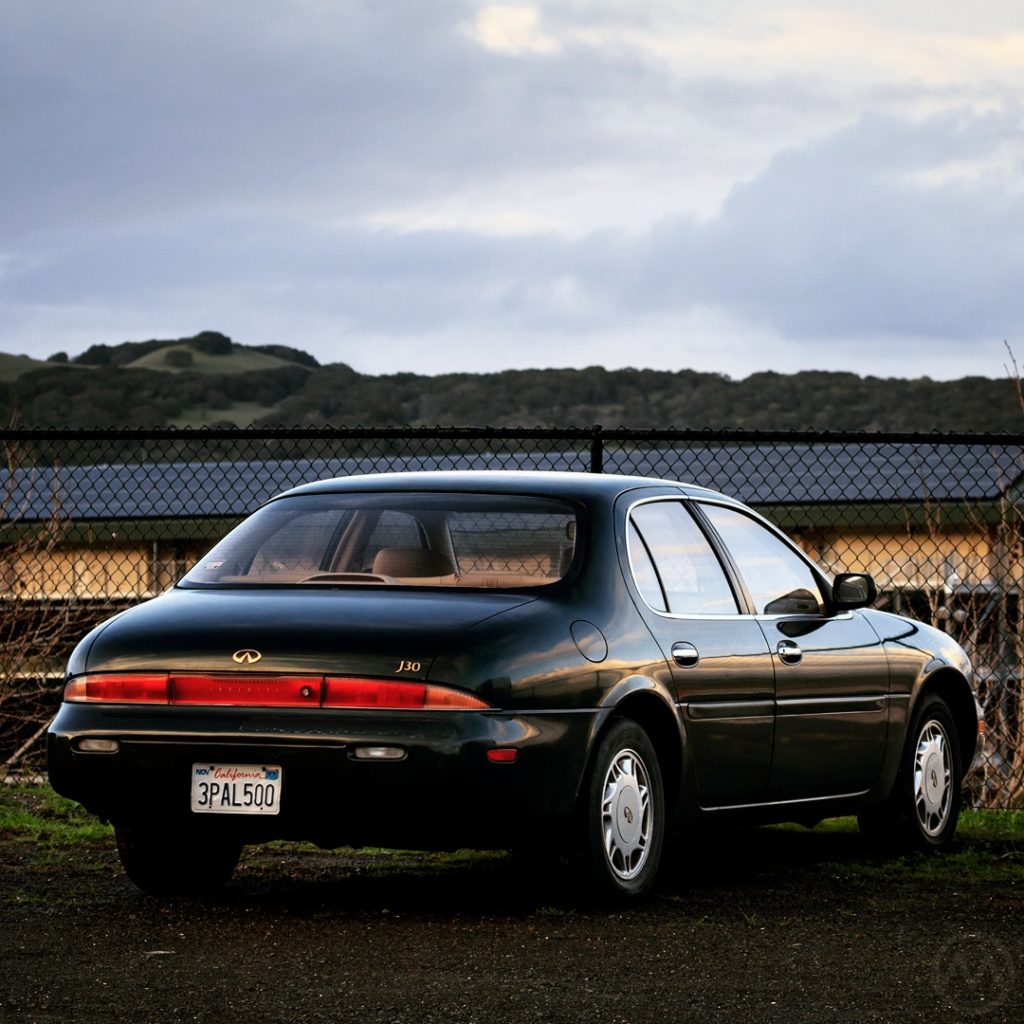When the Infiniti J30 was new in 1992, a reporter cornered Nissan USA’s then-CEO Thomas Mignanelli and prodded him about where its design inspiration came from. “Let`s just say that Jerry Hirshberg is a real fan of Jaguar,” he replied. This was partially accurate in that yes, Nissan Design International boss Hirshberg did like Jaguars, but in reality, the cars of Browns Lane weren’t really on the minds of the people who created this particular car.
Jaguar Purists would also have strongly disagreed with the assertion that this car was more Jaguar than anything the British firm was building at the time, but it did have some of the same mystique. The round shape, an infusion of California style, and a punchy V6 engine, turned the J30 into a perfect visual and philosophical successor to 1960s Jaguar S-type more than half a decade before the Brits launched their own revival.
Comparisons between the two by experienced Journalists, some of whom had been around in the 1960s, were a press coup for Infiniti at a time when it really needed it. Nissan’s luxury brand, in which hundreds of millions of dollars had been invested, had stumbled badly out of the gate in 1990 with an ad campaign that hardly featured the cars. It was widely overshadowed by crosstown rival Lexus. Three years later, the J30 was a breakthrough and something that Lexus could not compete with, despite its resemblance to the smaller and cheaper first-generation Nissan Altima.
Unsurprisingly, both cars came from NDI, and we recently got to hear a little bit more about their origin From Allan Flowers, one of the first designers hired by Hirshberg way back in 1980.

The Phone Call
Hirshberg had been a GM designer for the first 15 years of his career, which notably included work on 1960s Pontiacs, the final design for the “Boattail” Buick Riviera, and loads of other Buicks and Pontiacs in the 1970s. In 1980, he’d gotten a call from Nissan’s Japanese CEO, Takashi Ishihara, asking him if he wanted to head a U.S. studio in California.
The first time Ishihara called, Hirshberg hung up, thinking it was a prank call. But Ishihara told Hirshberg, “I want to change the flavor of our soup, and I will stay out of your kitchen.”
Both parties were happy – Ishihara wanted a studio free from Nissan’s stifling internal politics and one which was more in touch with American consumers. Hirshberg liked GM but found the bureaucracy equally stifling. Sometimes working at a big company offers you loads of prestige, but you only get to design a taillight or you’re adapting a committee design. In Nissan’s plan, Hirshberg would have far more direct input.
Hirshbert then recruited two of his GM deputies, Flowers and Tom Semple, and they went with him to La Jolla. NDI was not the first Japanese studio in California – Toyota had already formed Calty and Calty designs were already in production, but it would have a huge impact on Nissan’s designs in the late 1980s and early 1990s. If you want to know what this experience was like, check out the full story on Hagerty Media.
As Hirshberg later described in a Chicago Tribune interview, Ishihara (who would be gone by the time NDI’s designs reached the market) told him: “You are being created to rock the boat, to shift [Nissan’s] design course, and you will not be loved by all.” Hirshberg proved a tireless advocate for passionate design. His deputies led a pair of teams, Semple’s Red Studio and Flowers’ Blue Studio, and they soon had an army of high-quality designers working on all sorts of projects.
The Infiniti J30 and Nissan Altima
By the end of 1986, the first NDI production designs were on sale (the Hardbody pickup, the original Pathfinder, and the NX Pulsar – all popular in their day). In the late 1980s, the studio began working on what became the J30 (primary stylist Doug Wilson) and Altima (primary stylist Allan Flowers).
“At one point, I was assigned to work on Project IV, which was a redesign of the [Nissan] Stanza,” Flowers told OldMotors. “That program was about six months ahead of the J30. So we were doing scale models for that, and about the time we sent them off to management, Tom Semple’s Red Studio began working on the J30. Now, I had done the IV design that got bought, but my [deputy] designer Doug Wilson had done another design that everybody liked, so I sent him off to Tom’s studio to work on the J30. The Altima, of course, looks a lot like the J30.”

Indeed, both were studies in soft, organic forms — the bread and butter of the “Jellybean” era of Car Design, but both attractive and contemporary. The Altima had a much larger market impact. It was not as popular as later Altimas would become, but it properly revived sales of the medium-compact Nissan for the first time since the 1970s and helped establish the name with consumers. The Stanza, flagging for years, was all but forgotten afterward.
But for all the Altima’s success, it was the J30 that got all the press. Car and Driver’s William Jeanes remarked that among his contemporaries, the J30 was “Often described as looking more like a Jaguar than a Jaguar.” The magazine’s first review was literally headlined “The Infiniti J30 is a Japanese Jaguar.”
The J30 replaced the square-rigged M30 coupe but continued its basic formula — now a “4-door coupe” like the Rover P5B Coupé, though nobody called it that at the time.
But as before, it still came with rear-wheel drive and a 210-horsepower VG30DE V6. As with the M30 and unlike classic Jags, it was automatic only. When not calling it a “Japanese Jag,” some described it as a luxurious 4-door 300ZX, with which it shared an engine. It was fairly quick, but not in Z-car territory. An optional J30t package gave it BBS wheels, a spoiler, beefed-up suspension settings, and HICAS four-wheel steering, but the package was rarely ordered.
The M30 had been a reworked JDM Nissan Leopard (F31), and the J30 was the next generation of Leopard (Y32), now called the Leopard J Ferie in Japan (miming the French jour férié). The rear-drive platform architecture came from the Cedric/Cima/Gloria, but looked wholly different in the Wilson/Hirshberg suit. In Japan only, the VH41DE 4.1L V8, as seen in the Infiniti Q45, was optional — but that engine wasn’t offered in the U.S.-model J30.
Interestingly, the sleek new styling did not go down well in Japan.
“The J30 came out in the US market I think six months or a year before the Altima, but the IV was actually designed first. I can’t remember which one came out first in the Japanese market, but I think probably the Bluebird [the JDM name for the car] came out there before that Leopard J,” Flowers added. “Both were miserable failures in the Japanese market. Because they didn’t like Jelly Bean, you know?”
Indeed, Japanese consumers also disliked elements of the Mk3 Honda Integra, which had been designed with an eye toward American buyers. In America, though, the car looked great and seemed poised for success. It was not to be.

Finite Infiniti
This was an era when Infiniti was only offered in North America, and the J30 was designed to slot between the lower-end G20 (the global-market Nissan Primera with fancier fittings and a different badge) and the flagship Q45. The interior, designed with help from Italian furniture house Poltrona Frau, was beautifully appointed for the era if small for the car’s overall size. The sloping roof and fall-away rear made for a tight back seat and tiny trunk for a car as large as an Audi 100.
It got rave reviews — especially from fellow designers — but never seemed to be a big seller. It was, however, about 40% of Infiniti’s volume in 1994 and 1995.
The J30 had a very successful marketing campaign featuring actor Jonathan Price (probably best known to Old Motors readers from Ronin), but it still seemed to suffer from the brand’s overall lack of identity with American consumers.
Sales peaked at around 22,000 units in 1994/5, which was too bad — because the car offered Jaguar-like style and refinement at a good price and with solid reliability. Like many “style cars,” it got lots of attention when it was new, but the Infiniti J30 seemed to fade away in the mid-90s despite the fact that it remained in production until the summer of 1997.
The J30 that this article was originally written for, the black one just above, sported a rare 90s accessory – gold badges, very popular then. There was also a rare J30t “Gold Package” with even more gold accents, but this is a regular J30. We’ve updated the story with more recent pictures of a gold J30, but it doesn’t have that particular piece of flair. Gold badges were typically applied at the dealer, and probably peaked in popularity between 1993 and 1997. They were almost uniformly seen on Japanese cars — rarely on U.S. Domestics other than the occasional Cadillac.
By 1997, NDI was in a design drought as Japanese Management wasn’t using many of the suggestions of the studio. Part of the reason may have been that Japanese business culture had become much more conservative after the early 1990s recession and the collapse of Japan’s “bubble economy.” That changed late in the decade with the advent of the first Nissan Frontier pickup, the Xterra SUV and a concept for a revived Z car.
Hirshberg retired in the summer of 2000, but sadly passed away from cancer in 2019. We still have his excellent work, however, and that of his former designers.
Editor’s Note: This story first ran in 2019, but we’ve updated it with some new details and photos. Special thanks to Allan Flowers for all the extra info!

